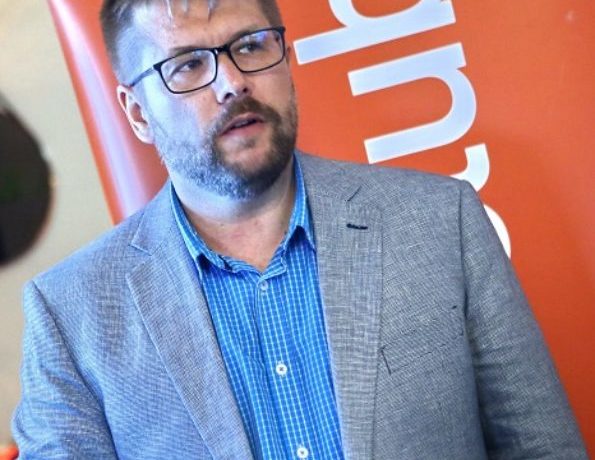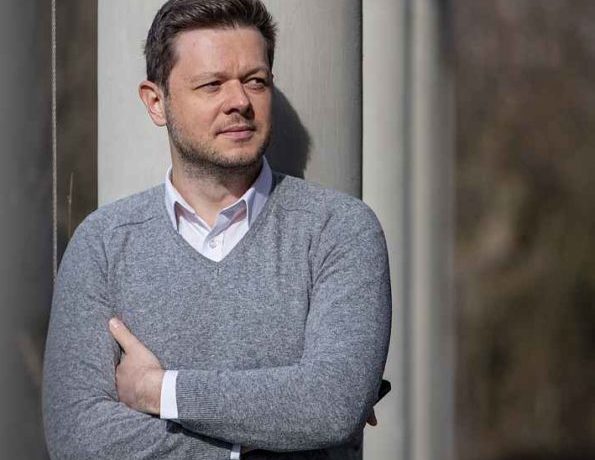TV viewers’ behaviour is changing and the advertising market has to do so as well, points out Petr Hatlapatka from Media Club.
The pressure on TV inventory and the outlook of TV GRP development in the following years require broadcast operators to search for ad placement options, says Petr Hatlapatka, Head of Online Sales in the Media Club agency.
Available research studies show that the time spent watching TV and the internet traffic have grown in the pandemic. In principal, the development follows the pandemic waves seen over the recent year. What are the impacts on online video and video advertising?
As people in the pandemic spend more time watching videos and TV, the time spent on our video portal has been increasing. The capacity for video advertising has been growing accordingly. For example, this April the time watched increased by about 15% compared to the first months of this year. The time watched is our priority as it is used to calculate a market share.
It is assumed that the current internet increase mostly relates to the news and information search as well as to leisure time, which is mostly spent at home in the pandemic. What is the increase attributable to?
Primarily to the size of archives. This is the driver of the time spent by users on a given video portal. In general, I would say that it is an advantage for TV video portals if they post as much video content as possible to their websites. Thanks to this, they report the longest time spent watching videos, which we can clearly illustrate on our example.
Which of your websites is key for video ad sales?
Definitely iPrima.cz, where we have the largest offer of long videos. The price for ad space on long videos is much higher than on short ones. Specifically, we have experience from Like House, a reality show watched mostly by young people aged 15-24 that has increased iPrima’s performance. The viewership of the reality show on the website is above average, we had hard times keeping the servers going. By number of started replays, Like House has even overtaken the TV series Slunečná. It is our most successful video format at present, which works well especially with young audiences. Clients mostly seek to address young viewers on social networks, which, however, lack formats adequate to TV ads. Our video spots are non-skippable for fifteen seconds and in our opinion, they are closest to TV ads.
You have mentioned the increase in online video time watched and the relating capacity increase for placing video ads. Is there any interest in them?
The interest in video advertising has increased but ad inventory went up even more. Between 2019 and 2020, we have grown 25% in income from video ads. Although last year was impacted by the pandemic, we managed to increase our income from video advertising.
Is this year’s development favourable again?
This year started with lockdown but the first four months were stronger compared to the same period last year. However, the growth has no longer been twenty percent. But on the other hand, the yield in not small in aggregate. And it is true that inventory has grown more. This helps us as the pressure on TV space is large and thanks to the growing digital inventory, we can offer space to clients for the same content. That is why we started talking about the need to connect TV and digital last autumn. We perceive that the market has not been prepared for this but in our opinion, this trend is inevitable. TV viewers’ behaviour is changing and the advertising market must do the same. The question is not whether it will change but when it will change.
Is it changing because people watch content more with a time shift and use paid video portal offerings?
Yes, it is because people increasingly watch paid video services (SVOD) such as Netflix or HBO Go. We expect that over years, the space for TV GRPs will decrease. Although TV will keep a high reach, the time spent may be expected to gradually decline, especially in younger target groups. We estimate that within five years, up to 25% of TV GRPs will disappear from the market. Moreover, there will be no ads on SVOD and if so, just very limited. The space for creating TV GRPs will be reduced, which will mean that the price for TV GRPs will go up. We cannot expect that viewers’ behaviour will return two years before the pandemic and that people will start cancelling their subscriptions to Netflix or HBO. This is an outlook with which we have to work – that is why we seek to create an adequate space for online ad communication and that is why we work with GRPs in digital as well.
What can they offer to clients?
We can see that video advertising shortens the time when a viewer starts searching products or services based on an advertisement watched. Thanks to this, video advertising can direct users to the web nearly immediately. I consider this the key benefit. Another benefit is that there is a younger audience group on the internet. Compared to the TV screen, these are younger target groups that improve the total reach by target groups in the general connection with TV advertising. Video ads thus definitely make sense for advertisers who want to address younger audiences. They can run part of their campaigns on the internet using eGRPs, which is what several clients have already been doing. Now at spring, we can see a growing interest. An important novelty is that we made video content available on the iPrima.cz portal just based on registration. Thanks to this we are able to better target advertising messages and better recommend adequate content to viewers.
Is there any evidence of how an advertising message exactly works if it is broken down into TV and a video portal?
We are working on it. We want to show clients and media agencies what the impacts are when a portion of campaign is implemented using eGRPs and how this impacts reaches in target groups. We can see that greater concerns and barriers in using eGRPs are experienced by media agencies than by clients. The crucial thing is that the content created in Prima is just one and is placed on TV and online. Distribution makes no changes to the content. The difference may be that online content is consumed more with a time-shift and is based more on users’ needs.
In your outlook for this year, do you take into consideration that usability of digital GRPs will increase?
We expect it namely in the months when the demand for TV ads is high. For us, iPrima is in fact another channel within which campaigns can be delivered. Colleagues who organise TV campaigns can see the number of GRPs on individual thematic channels and on iPrima.cz in our internal system. If there is no crucial change in the pandemic development in autumn, we estimate that video advertising will grow by 10-15%.
Are you planning any news for advertisers in the nearest future?
The largest piece of news is that we are going to launch dynamic ads for HbbTV. This will be suitable for clients who want to communicate in real time during their current offer, such as e-shops or betting companies. Dynamic advertising should be ready before the start of the autumn season.
Source: mediaguru.cz







